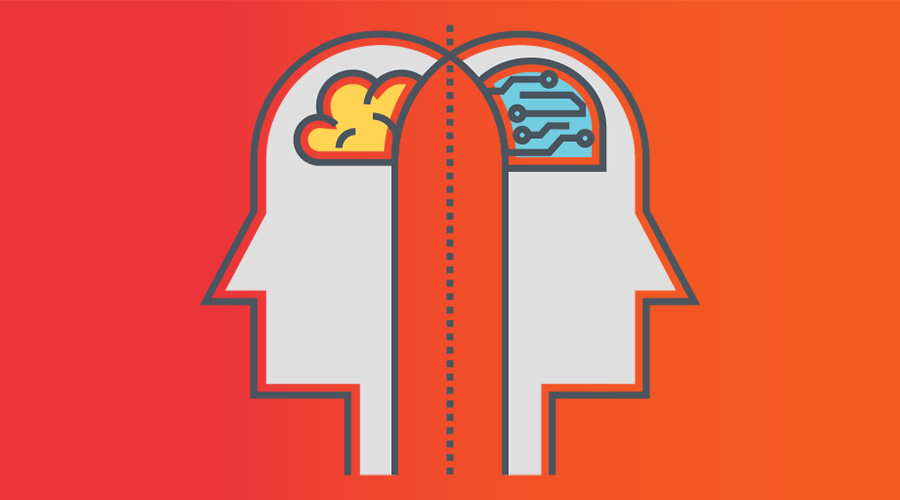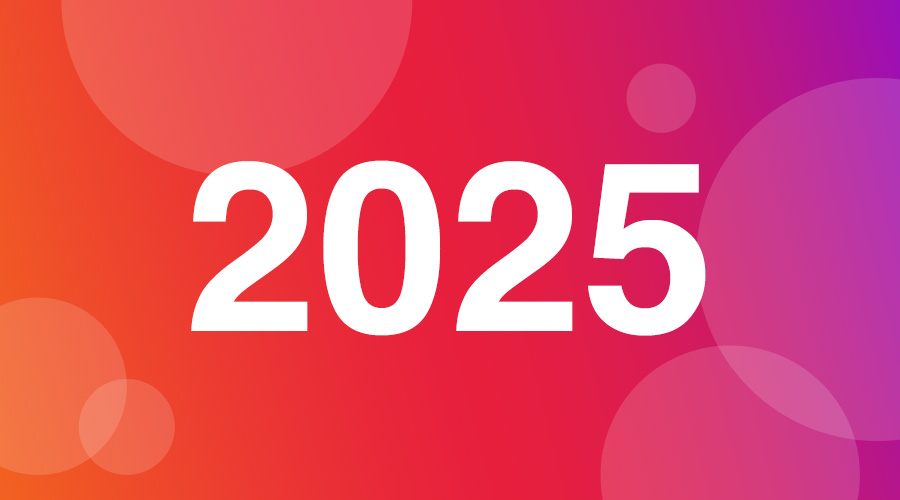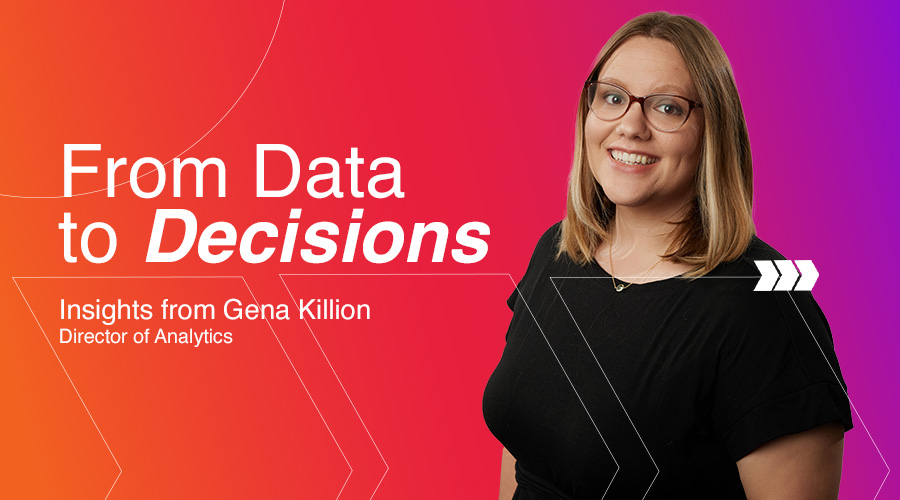AI isn’t coming for our jobs… it’s joining our brainstorms, sitting in on strategy sessions and maybe even helping pick the perfect GIF. At Simantel, we believe the future of marketing is human-led and AI-assisted, and we’re all in on both. AI helps us move faster, explore more ideas and focus on what matters most. We use it for speed, efficiency and inspiration, but never as a replacement for critical thinking, creativity or empathy.
And to dig deeper into our POV, we’ve tapped three of our sharpest minds: Dan Eizans, our CX Director with a knack for turning data into human-first journeys; Sara Ingles, a Creative Director who knows how to wield AI without sacrificing soul; and Abby Bell, our Data Privacy Officer who makes sure we’re keeping it smart and responsible. Together, they’ll break down how our teams are using AI to work faster, think deeper and stay ahead.
How are you currently using AI in your role?
Dan: I use AI quite a bit. I use it as a research assistant, for things like draft refinement or adding in additional knowledge. I’ll have it go through some of my notes to help me organize things for research and insights. I like to use it to help me make things more concise and clearer. The thing that I tend to use it for the most is refining a broader concept or strategic point of view that I have been working on. I also use it a lot for role-playing. I’ll describe what my client is like, if they’re particularly strategic or if they are more humorous, I’ll use it to refine my tone to meet their expectations or to think about different things through their experience.
Sara: I see it as an assistant to help me. To expedite communications out to my team and to my clients. I use it to take my initial ideas, solidify them and then quickly be able to get that into a very friendly, approachable tone. I also see it as a creative brainstorming support member. Taking something that you have an initial nugget of an idea for and allowing you to poke holes in it to see different angles that it could take. Mine into some of the data to prove that. For us, it helps to expand ideas and to help think differently but doesn’t replace the critical necessary steps that a human brings into (the work).
Abby: I truly use AI as an assistant. If I need help rewording an e-mail or thinking of the right word. I also use it as a research assistant. For example, if I want to look at e-mail trends for the last five years but only in B2B and only in a certain industry, then I’ll ask ChatGPT to do some deep research. With that functionality, AI can find the content, summarize it and source it which I really like because then I can go back to their original source then read it for myself.
TLDR: AI is like the ultimate sidekick and assistant! It helps clean up your ideas, find cool facts, make your writing sound better and expand your brainstorms.
How does your team decide when and where to integrate or experiment with AI for a project or workflow?
Dan: For me, my number one policy: I never start with AI. I use AI after I have either a loose framework or a loose idea of something that I need help with. Or, if I’m short on time, I’ll use it to prepare briefs for me so that I can then go and do the deeper research later. I always have some sort of kernel of an idea. So, if I think “Man, I wish I had more time to spend on that” I’ll use AI to start creating prompts that I can dig into.
Sara: I find myself using it once I’ve brainstormed some ideas and I want to see how I can take them further. So early on in that idea journey. We’ve also seen it be really fun on the visual side. Maybe we’re designing an environment for our customers and being able to verbally describe that and then quickly get to a visual representation of that can help evoke the feeling. It’s really powerful and helps further that concept along.
Abby: Each of my teams does something a little bit different. Marketing automation for example does a lot of e-mail coding as one of their everyday tasks. When a task is repeatable it’s a great opportunity for AI to try and do it and learn from previous examples of a human doing it. Once we give it the input and desired output from previous code bits, it can then figure out the pattern of how to make it work with a new input. So that’s a good example of how we can use AI to create a workflow. When we’re trying to create a media strategy however it takes some human intuition. It takes knowing years and years of talking to the audience and understanding how specific channels might perform for that audience. So for those situations we still heavily rely on our Simantelites.
TLDR: We always start with human ideas then let AI jump in to speed things up, spot patterns, bring visuals to life, or handle the boring stuff, so we can focus on the creative, strategic work only people can do.
How are you talking to clients about our use of AI at Simantel?
Dan: I’m transparent about it. If I do use something that’s AI or there’s an AI image in my deck, I will communicate that. And when I use AI, you’ll always see sources on my work. I am very explicit. I want to know exactly where AI got this information from.
Sara: It’s a sensitive subject with some of our clients right now. In many cases, they’re being cautious with how they want to utilize those tools. Do they trust the space that they’re putting it into that it’s going to maintain the confidentiality that they require? So, for many of our clients, it’s a conversation of is this the right time to be using it. Is it the right way to be using it but being very transparent in how we see it being beneficial. Reaching their goals is really important.
Abby: I think clients want to know two things. The first thing is what cool stuff can you do with AI and the second thing is about the safety of their data. The first question it’s fun because we can give them ideas on when and how to use AI to brainstorm creatively, research something that maybe others in the industry have done, etc. The second question is super easy. As your agency, Simantel wants to stay ahead of the trends to make sure that we’re bringing you the coolest most strategic thinking that we can, and today that likely involves some sort of AI. Many of the tools we (and our clients) are already using (like Adobe or Salesforce) include some AI functionality.
As DPO, I’m constantly looking at different learning models and what data is shared by which platform. And as an agency, we have a very strict rule that we are absolutely not putting any customer data into any AI platform, anywhere, ever. We want all of our clients to know that AI is not replacing human thinking at Simantel. It might help us be more efficient, and we’re hoping that it will give us more time to think creatively on the things that clients really want us to focus on which is how to make customer connections for their brand.
TLDR: We’re always upfront with clients about using AI, sharing sources, protecting client data and making sure it’s used responsibly to boost creativity, not replace the smart humans behind the work.
What advice would you give to other marketers or agencies just starting to explore AI tools?
Dan: The best thing to do is to have a very specific set of use cases that you want to explore. We’re in rapid adoption mode right now. So, as agencies, I think we need to be very specific about how much we want to invest upgrading our own tools versus picking tools that match the goals that we have either as a marketing or strategy agency. Everybody’s so specialized these days. AI helps start to level that playing field. So, my suggestion is just having a narrowed scope of what you’re comfortable doing from a legal and ethical standpoint.
Sara: Don’t get discouraged if it’s not delivering what you expect today. Leverage other individuals who are leading in this space to see how they are getting it to work for them. That way you can take that back and see how it can help shape the direction for your team or the way you know you want to work within the tool. Just be curious.
Abby: Like many things, AI will work differently for different agencies, different tasks and different requirements. We’ve tested several different AI platforms and different AI functionalities within our existing platforms, so my advice would really be to try it! Do it. Test it. And have others do the same, because until you really get into the habit of using AI daily you won’t know what it can do for you.
One of the things that I like to do is put the same prompt into different platforms. For example, Copilot versus ChatGPT, to see which one I like better. The answer may vary depending on the task that I gave it so that’s going to vary for other marketers whether they’re super AI forward thinking or they’re just getting started. But the one thing I would say is test for yourself and see which platform you like to use and for which tasks.
TLDR: The best way to get started with AI? Be curious, pick a few clear use cases, test different tools and figure out what fits your style, because there’s no single right way to use it.
Conclusion
As we continue to explore the evolving role of AI in marketing, this is just the beginning. At Simantel, we’re committed to staying ahead of the curve, blending technology with human insight to create meaningful, impactful work. Want to talk more about how AI can work for you? Let’s connect!




